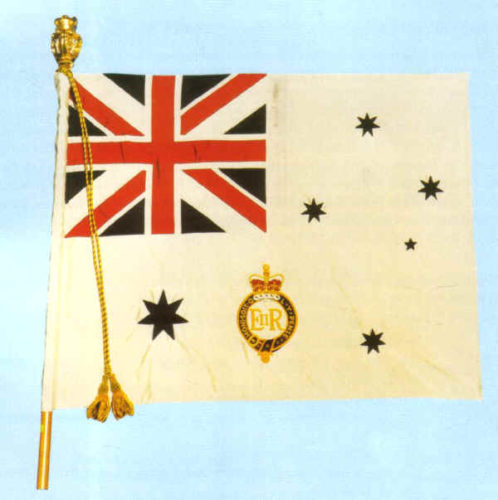- Author
- A.N. Other and NHSA Webmaster
- Subjects
- History - general
- Tags
-
- RAN Ships
- None noted.
- Publication
- December 1989 edition of the Naval Historical Review (all rights reserved)

Since the earliest times, warriors have carried standards or flags as a distinguishing mark and to serve as a rallying point during battle. To lose the standard often meant that the leader was lost and thus the standard became symbolic of the spirit and tradition of the group to which it belonged.
Arising from these traditions the British military forces were presented with a King’s Colour by Charles I in 1661. Approval for His Majesty’s Australian Fleet to use a King’s Colour was granted by King George V on 31 March 1925. This King’s Colour was presented by the then Governor-General, Lord Stonehaven in a ceremony in the Domain on 27 January 1927.
The King’s Colour became the Queen’s Colour on the accession of Her Majesty Queen Elizabeth II.
On 1 March 1967, ships and establishments of the Royal Australian Navy hauled down the White Ensign of the Royal Navy for the last time and hoisted in its place the Australian White Ensign. A new design of Queen’s Colour was approved by Her Majesty on 8 December 1967 and was presented to Her Majesty’s Australian Fleet and HMAS CERBERUS by the then Governor-General, Lord Casey in Melbourne on the 1 November 1968.
The present Queen’s Colours are Australian White Ensigns of silk, with a Crown and Royal Cypher superimposed with blue and gold cords and tassels.
The Queen’s Colour is a reminder to all ranks of their loyalty and duty to their Sovereign, their Country and their Service. The Colours are highly valued, carefully guarded and treated with great respect.




